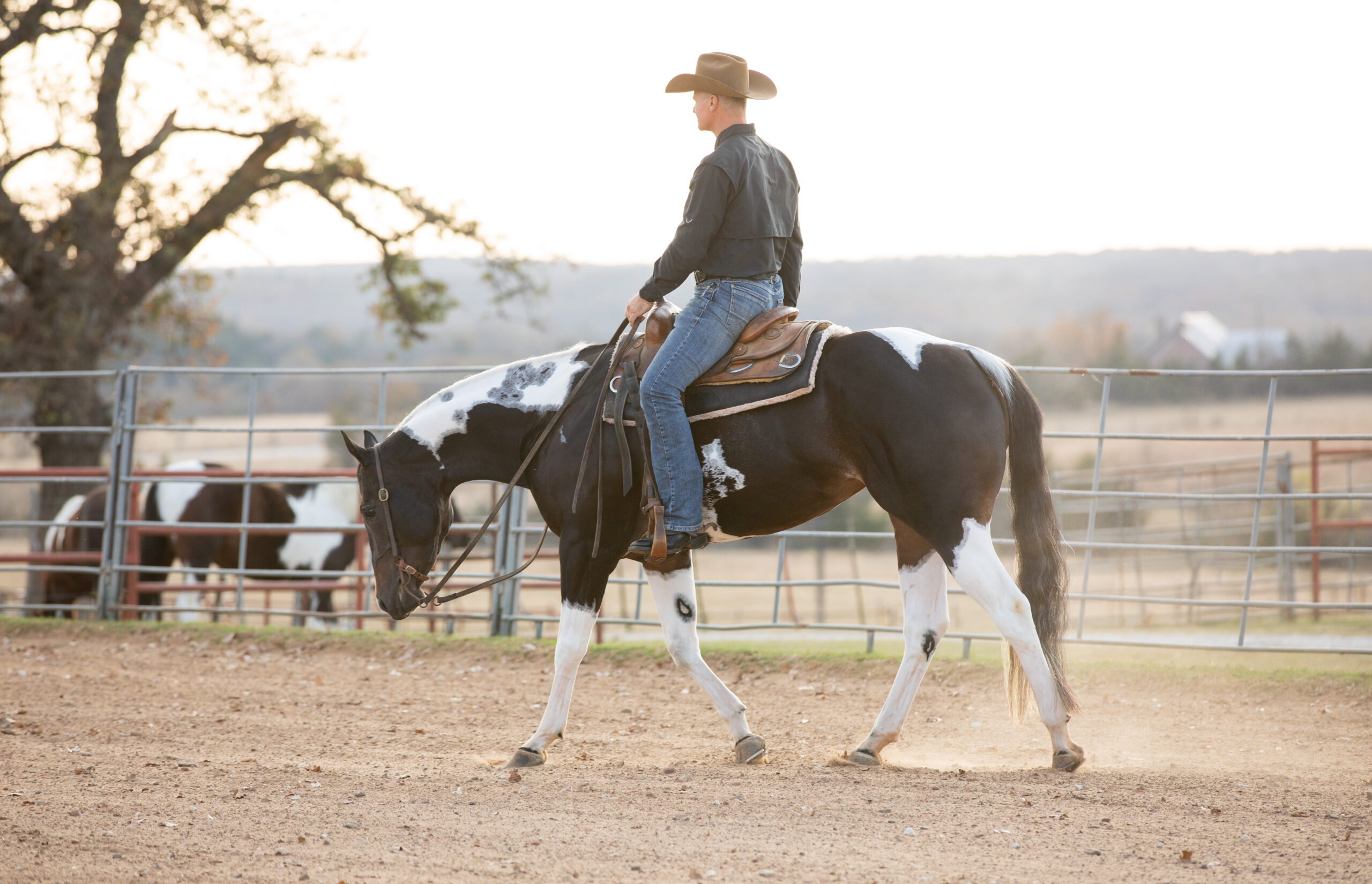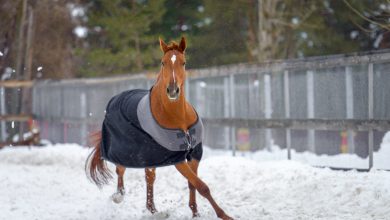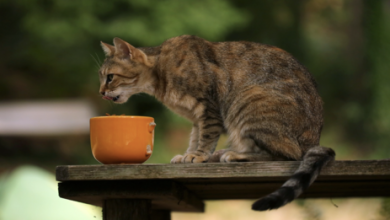Finding the Cause of Your Horse’s Stiffness

You check in with your horse every time you swing a leg over him, noting how he feels, gauging his mood for the day, and you can probably clock if there’s something off right away. If you notice that your horse is stiff to one or both directions during your warm-up, here are 6 possible causes you should check for, to rule out potential issues.
Improper Warm-Up
Just like human athletes, your horse needs a proper warm-up to perform at his top level. It’s unfair to hop on after he’s sat for a month and expect him to be perfectly soft and supple. All too often we forego a proper warm-up, forgetting that our horse needs time to stretch his muscles, loosen ligaments, and get his blood flowing. Don’t just walk a lap or two and jump right in to hard work. A correct warm-up routine helps increase blood flow to muscles, improves flexibility, and prepares your horse’s body for physical activity. Take the time to give your horse a thorough warm-up, and then reassess how he feels. If he still feels stiff and less than supple, it’s time to dig deeper.
Learn Brad Barkemeyer’s Advice for a Proper Warm-Up
Muscle Fatigue or Strains
If you’re preparing for a show, legging your horse up for trail riding season, or the weather has just been nice enough to ride everyday, you might be overdoing it. Overexertion, sudden intense workouts, or repetitive movements can cause muscle fatigue or strain, resulting in stiffness. Giving your horse sufficient rest and incorporating proper conditioning programs can help prevent muscle-related stiffness. Regularly monitoring your horse for signs of muscle fatigue, soreness, or stiffness is important for early detection and intervention. Observing changes in gait, posture, behavior, or performance can indicate muscle-related issues that require attention.

Make sure to give your horse rest days, to recover from muscle soreness. Giving your horse sufficient rest between workouts is crucial for muscle recovery and overall well-being. Rest allows the muscles to repair and rebuild, reducing the risk of overuse injuries and stiffness. Proper rest periods also help prevent chronic fatigue and burnout.
Ill-Fitting Tack
If you notice your horse is stiff, consider any changes you’ve recently made in your tack. A new saddle, pad, or bit, might be the culprit behind sudden changes you notice in your horse. When tack doesn’t fit properly, it can create pressure points, restrict blood flow, and rub against your horse’s back, leaving hot spots or white hairs where the blood flow was restricted.
Discomfort and pain induced by ill-fitting tack can result in tensed muscles, altered posture, and compensatory movements as your horse tries to alleviate the pressure and discomfort. Over time, this can lead to muscle strain, stiffness, and even musculoskeletal issues as your horse attempts to adapt to the discomfort caused by poorly fitting equipment. Regularly checking and ensuring that tack fits correctly is crucial for supporting your horse’s physical comfort, freedom of movement, and overall performance.

Take time to check that your tack fits properly, and isn’t rubbing, pinching, or pulling.
Terri Cage/adobe.stock.com
Problems in the Joint
Joint problems, including conditions like arthritis, inflammation, or injury, can have a significant impact on your horse’s mobility and comfort, often resulting in stiffness. This potential cause for equine stiffness might be more common in older horses, although arthritis can begin at any age. Arthritis, a common joint disorder in horses, involves the breakdown of cartilage within the joints, leading to pain, inflammation, and reduced range of motion. Inflammation can exacerbate joint stiffness, making it challenging for your horse to move comfortably. Chronic inflammation can further compromise joint health and contribute to ongoing stiffness.
Other joint issues aside from arthritis can cause stiffness, as well. Intense physical activity, high-impact training, or repetitive stress on the joints can accelerate wear and tear, leading to premature joint degeneration. Over time, excessive strain can damage joint tissues, resulting in stiffness and functional limitations. Unfortunately, even your horse’s conformation can contribute to joint problems. Poor conformation, incorrect hoof balance, or uneven weight distribution can place undue stress on specific joints, compromising their structural integrity and function. Improper biomechanics can contribute to joint instability, inflammation, and stiffness over time. Consulting with your vet for a thorough joint assessment is essential for diagnosing underlying joint problems and determining the most appropriate treatment plan. Diagnostic tests such as radiographs, ultrasound, or joint fluid analysis may be recommended to evaluate the extent of joint damage.
Dental Issues
A common cause of stiffness, undesirable behavior, and avoiding collection lies in the mouth. Dental issues like dental points, sharp edges, or uneven wear can affect your horse’s ability to chew properly, impacting overall muscle function and causing stiffness. Sharp points can also collide with a bit, causing pain and discomfort. Your horse might carry his head unnaturally to avoid this, and avoid collecting properly to
Regular dental check-ups and corrective treatments are essential for maintaining dental health and preventing stiffness.
Try This Lead Change Drill
In the Hoof
Conditions like laminitis, hoof imbalances, or improper shoeing can result in gait abnormalities and discomfort, leading to stiffness in your horse. Think about if your feet hurt after a long day of activity. You might walk a little bit off your normal gait as you compensate for foot pain. Hoof issues can range from severe issues like laminitis, to more common problems like thrush.
Hoof imbalances, such as long toes, underrun heels, or unbalanced trims, can affect your horse’s biomechanics and weight-bearing capabilities. Uneven loading on the hooves due to imbalances can result in stress on the joints, ligaments, and soft tissues, causing compensatory movements, muscle strain, and subsequent stiffness. Just like with dental work, routine farrier visits are important to keep your horse balanced and maintain proper hoof health.



